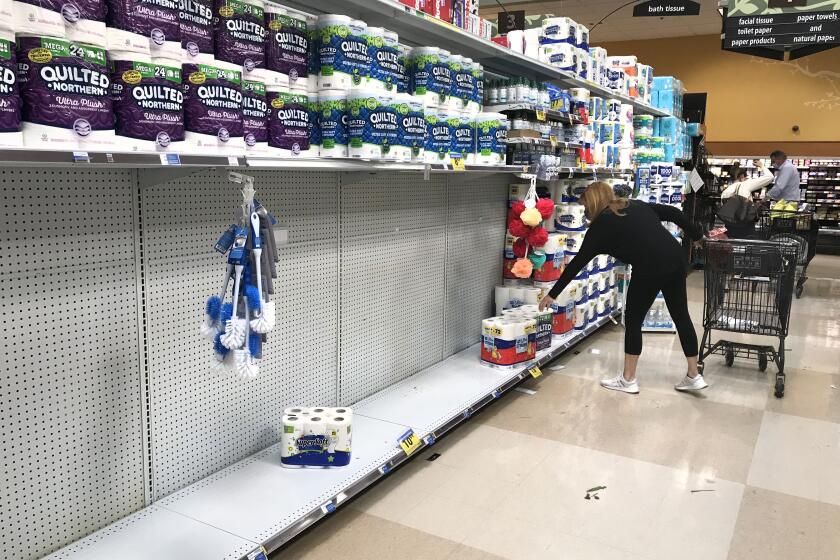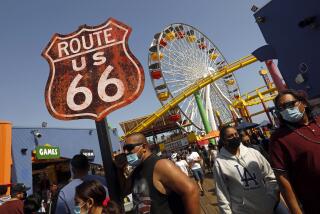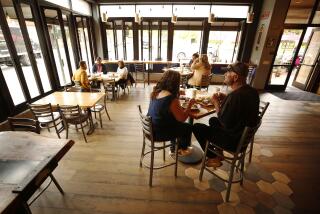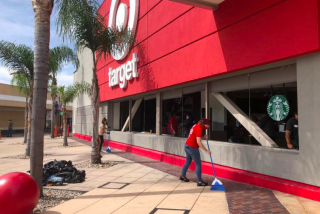Amid stay-at-home order, state officials walk back grocery store capacity limits
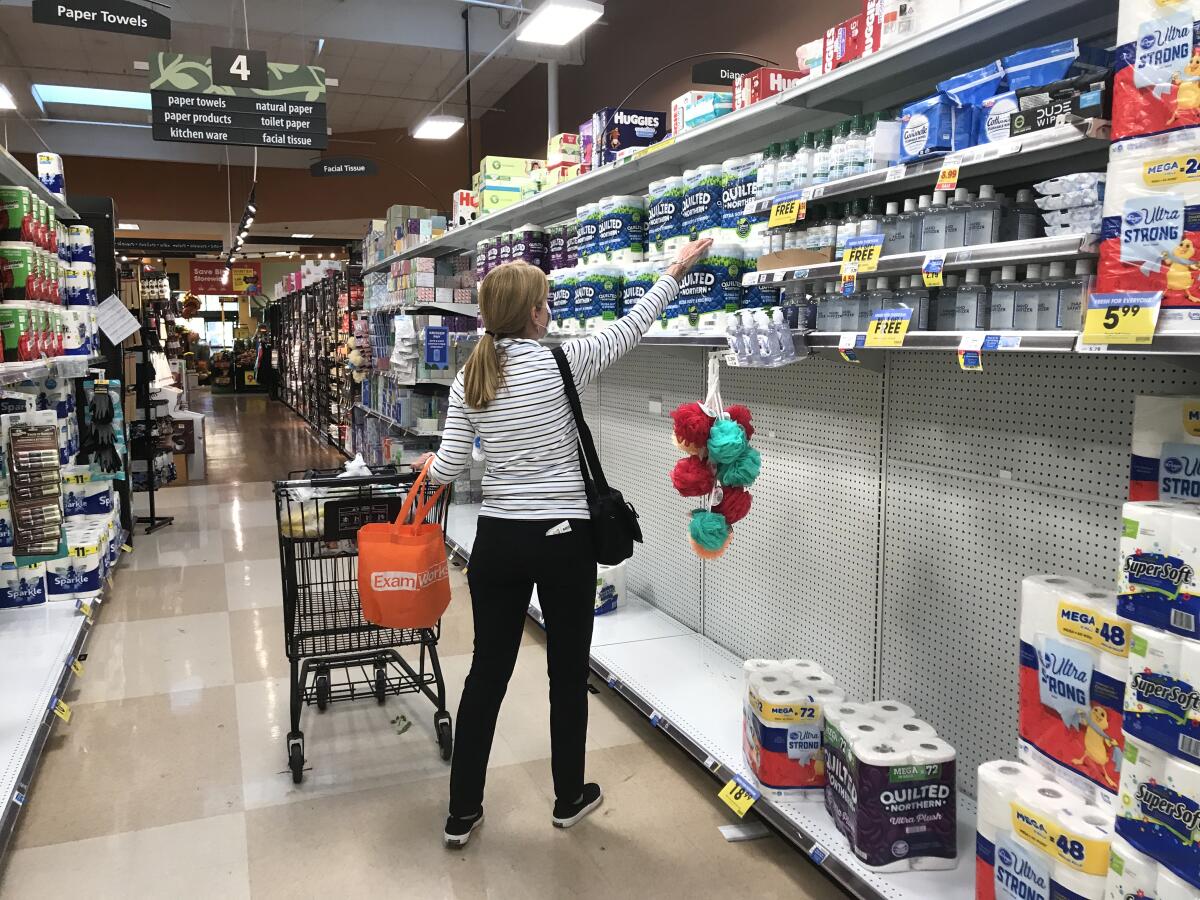
California officials have walked back a stringent capacity limit for grocery stores at the 11th hour to ensure that residents will have enough access to food amid a sweeping new stay-at-home order.
On Sunday, hours before a new health order went into effect across much of California, officials issued an addendum allowing grocery stores to operate at 35% capacity â down from 50% capacity, which has been in effect statewide since the beginning of the pandemic, but up from 20% in the latest state-ordered restrictions. The stateâs order had required both essential stores, such as grocers, and nonessential retail, such as shopping malls, to limit capacity to 20% if they were in an area considered a coronavirus danger zone. But the California Grocers Assn. lobbied against such a drastic reduction.
âIn order to ensure that Californiaâs grocery stores are able to safely deliver sufficient quantities of food to California households, it is necessary to ensure capacity for grocery stores,â according to the supplemental order signed by Dr. Erica Pan, the California Health Departmentâs acting public health officer, on Sunday.
Grocery stores must be standalone operations and primarily sell food to qualify for the increased capacity, the supplemental order states, noting that access must be âstrictly meteredâ to ensure compliance.
Grocery stores in Los Angeles County had already been limited to 35% capacity since Nov. 30, when a bevy of new Health Department requirements went into effect. The revision to the statewide order, which was announced by Gov. Gavin Newsom last week and tied to a regionâs hospitalization capacity, allows L.A. County grocers to continue operating at that level.
Roughly 240,000 Californians have tested positive for the virus in the last 14 days, and about 112 have died of COVID-19 each day over the last week.
State officials worked over the weekend with the California Grocers Assn. to bring clarity to the latest order, said Dave Heylen, a spokesman for the industry group.
On Friday evening, the association said in a statement it did not think Newsomâs order applied to grocery stores. Now, the association is advising members to abide by the cap of 35%.
Ron Fong, president and CEO of the association, argued that grocery stores needed to be distinguished from other types of retail, noting that under the original order all stores were lumped together.
Contrary to other retailers, such as clothing stores, âwe are providing critical infrastructure, providing safe food to our customers,â Fong said Monday morning.
Stores are once again limiting how much toilet paper and cleaning supplies customers can buy, as the third wave of COVID-19 infections ramps up and lockdown orders return. But the companies have had all summer to prepare.
A member of Newsomâs task force on business and jobs recovery, created in the spring during the earliest surge of the pandemic, Fong said the governor agreed that grocery stores needed to be carved out in the new rules.
Customers should not have trouble accessing their local grocery stores under the modified cap, Fong said.
âThere will not be crowding,â he said. âWe will not have long lines out the door, which was what our concern was going to be at 20%.â
Despite Fongâs confidence, some grocery stores have already seen lines as the number of shoppers has been limited inside stores. Customers lined up outside Sprouts market in Alhambra around 3 p.m. Sunday. A line of about 10 customers waited outside for about 10 minutes to get through the front doors. An hour later and about 20 miles west, a line began forming outside Trader Joeâs in Studio City.
More to Read
Sign up for Essential California
The most important California stories and recommendations in your inbox every morning.
You may occasionally receive promotional content from the Los Angeles Times.


